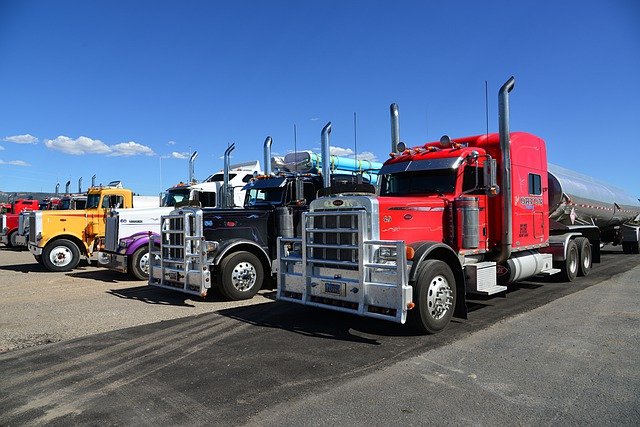
1. Remember To Take Breaks
Perhaps the most important rule for anyone that is going to be driving long distances is to take routine breaks. You need to be actively taking breaks as a professional driver because you will get tired. No matter how immune you think you are to getting tired, there will be a time when you start to slack off without a break. That’s why it’s always a good idea to take a good 30 minutes or so in between your long driving sessions. The majority of the jobs that you take will require you to spend several hours on the road at a time. You should be mapping out different areas where you can rest based on travel duration.
There isn’t anything set in stone on how much you should be resting per job. After all, everyone is different. It’s a good rule of thumb to give yourself a good half an hour every 3 hours or so. This can help you regain some energy and it can keep you fully alert. You need to be fully alert while driving such a heavy vehicle because your reaction time needs to be quick to keep you and everyone on the road safe. And if you need training for LGV driving, you can check out Easy As HGV.
2. Map Things Out
If you are going to be heading out on a long journey, you need to map it out in advance. You will need to plan out your routes beforehand. You want to know not only where you are going, but also want to know how you are going to get there. This helps you go through the route beforehand to see if you can find good places to stop, and places to grab a bite to eat, and it can help ensure that you are leaving on time. Once you plug in the destination on your GPS or phone app, you can figure out what time you would need to leave to get there on time. You also want to plan for any weather you might face while on the road. If you are driving in slick conditions, you’ll need to account for driving slower.
3. Secure Your Load
As an HGV driver, you will need to secure your load before heading out. Driving with an unsecured load is only going to put your load, you, and everyone on the road at risk. You want everything to be fully secured before you set off. Driving with an unsecured one is a risk and it’s best to be avoided. Overloading is not a good idea either. It’s always better to leave a little extra room than to overload the vehicle.
4. Maintain The Vehicle
You want to implement daily checks before you head out on the road. It’s always a good idea to have a checklist of things that you want to look at before driving. You want to ensure everything is good before setting out. This means checking your tyres, looking at your lights to ensure they are working, and even checking your mirrors to ensure they decrease your blind spots. This entire process may be tedious and annoying, but it’s necessary. It doesn’t have to take too long. You want to do this because it’s going to make your driving experience safer and it can keep you from getting fined while on the road.
5. Avoid Distractions
This is something that everyone should be doing. If you are on the road, you want to avoid distractions at all costs. This is the best way to ensure you are ready to react to anything that comes your way. If you are distracted, you will find it easy to get into an accident. You can avoid distractions by keeping your phone out of the way. Do you need to have your phone there to make phone calls while driving? Keep your hands on your vehicle’s steering wheel at all times. You want to avoid any distractions whenever possible. The less you get distracted, the less the chances of you getting into an accident.
6. Avoid Tailgating
Tailgating is one of the things that can get you into an unavoidable accident. Normally, you would have plenty of time to stop if a vehicle suddenly breaks in front of you. However, if you are tailgating and driving too close to that driver, you won’t. It’s an easy way to increase the chances of you getting into an accident. Try to maintain a safe distance between you and the vehicles in front of you.
7. Minimise Speeding
Don’t speed when you are on the road. While you may want to get to your destination faster, it’s not worth it. It’s unnecessary. If you followed the steps in this article, you’ve already mapped out the time you need to leave to arrive on time. Because of this, you won’t have to speed to get to your destination when you need to. You will get there without having to rush. Put yourself in a good position to avoid speeding by mapping your route and planning before leaving.


